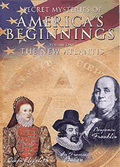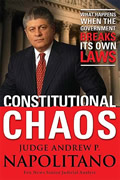Other
Kouri
Articles:
Battle at The Border: The War Few Discuss in Washington
Illegal Alien Killers, Rapists and Robbers
FEDS TO CORRECT MISTAKES WITH TERRORIST WATCH LIST?
Jim
Kouri, CPP
October 11, 2006
NewsWithViews.com
Lately, there appears to be more and more stories of names being erroneously placed on the federal government's Terrorism Watch List. Last Sunday, CBS TV's 60 Minutes aired a segment on some of the list's shortcomings and the difficulties being experienced by innocent American travelers.
The consolidated watch list managed by the FBI's Terrorist Screening Center contains the names of known or suspected terrorists, both international and domestic. Various agencies whose missions require screening for links to terrorism use these watch list records.
For example, U.S. Customs and Border Protection screens travelers at ports of entry. Because screening is based on names, it can result in misidentifications when persons not on the list have a name that resembles one on the list. Also, some names may be mistakenly included on the watch list. In either case, individuals can be negatively affected and may express concerns or seek agency action, or redress, to prevent future occurrences.
In conducting work at the FBI's TSC and the principal federal agencies that use watch list data, the US Congress requested that the Government Accountabilty Office review standard operating procedures and other relevant documentation and interview responsible officials. GAO made no recommendations after their review because the agencies have ongoing initiatives to improve data quality, reduce the number of misidentifications or mitigate their effects, and enhance redress efforts.
Annually, millions of individuals -- from international travelers to visa applicants -- are screened for terrorism links against the watch list. At times, a person is misidentified because of name similarities, although the exact number is unknown.
In some cases, agencies can verify the person is not a match by comparing birth dates or other data with watch list records, but agencies do not track the number. In other cases, they ask TSC for help.
From December 2003 (when TSC began operations) to January 2006, agencies sent tens of thousands of names to TSC, and about half were misidentifications, according to TSC officials. While the total number of people misidentified may be substantial, it likely represents a fraction of all people screened.
Even so, misidentifications can lead to delays, intensive questioning and searches, missed flights, or denied entry at the border. Misidentifications most commonly occur with names that are identical or similar to names on the watch list. To rapidly screen names against the watch list, agencies use computerized programs that account for differences due to misspellings and other variations.
The TSC has ongoing initiatives to improve computerized matching programs and the quality of watch list records. Also, CBP and the Transportation Security Administration (TSA) have established procedures designed to expedite frequently misidentified persons through screening, after confirming they are not on the watch list. Because security measures regrettably may cause personal inconveniences, the Transportation Security Agency and CBP, with the support of TSC, provide opportunities for people who have been misidentified or mistakenly included on the watch list to seek redress.
Most of these are misidentified persons who are not on the watch list but have a similar name and, therefore, may be repeatedly misidentified. Thus, TSA, for example, provides redress that relies heavily on efforts to expedite frequently misidentified persons through screening by allowing them to submit personal information that helps airlines more quickly determine that they are not on the watch list.
If TSA and CBP cannot resolve questions from the public, they ask TSC for help. For 2005, TSC reported that it processed to completion 112 redress referrals and removed the names of 31 mistakenly listed persons from the watch list. To ensure that opportunities for redress are formally documented across agencies and that responsibilities are clear, the Justice Department is leading an effort to develop an interagency memorandum of understanding and expects a final draft to be ready for approval by the fall of 2006.
|
Subscribe to the NewsWithViews Daily News Alerts! |
TSC and frontline-screening-agency officials recognize that, after the agreement is finalized, the public needs to clearly understand how to express concerns and seek relief if negatively affected by screening.
So, these officials have committed to making updated information on redress publicly available. GAO provided a draft copy of this report to the departments of Justice, Homeland Security, and State. They provided technical clarifications that GAO incorporated where appropriate.
� 2006 Jim Kouri- All
Rights Reserved
Jim Kouri, CPP is currently fifth vice-president of the National Association of Chiefs of Police. He's former chief at a New York City housing project in Washington Heights nicknamed "Crack City" by reporters covering the drug war in the 1980s. He's also served on the National Drug Task Force and trained police and security officers throughout the country.
He writes for many police and crime magazines including Chief of Police, Police Times, The Narc Officer, Campus Law Enforcement Journal, and others. He's appeared as on-air commentator for over 100 TV and radio news and talk shows including Oprah, McLaughlin Report, CNN Headline News, MTV, Fox News, etc. His book Assume The Position is available at Amazon.Com, Booksamillion.com, and can be ordered at local bookstores.
E-Mail: COPmagazine@aol.com
For example, U.S. Customs and Border Protection screens travelers at ports of entry. Because screening is based on names, it can result in misidentifications when persons not on the list have a name that resembles one on the list.













